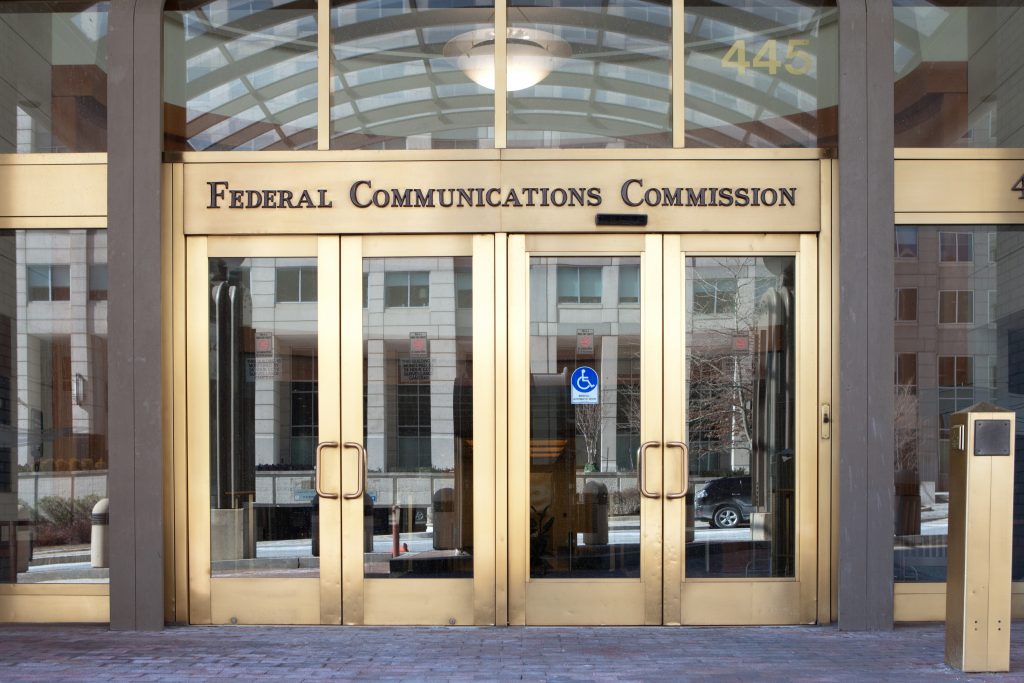December 14, 2018

Below is an update on the current spectrum policy landscape from Voqal’s Director of Telecommunications Strategy Mark Colwell.
Recently, telecommunications giant Ericsson released its annual Mobility Report examining the state of wireless communications across the globe. The report observes that global mobile traffic jumped 79 percent between 2018 and 2019, demonstrating a crushing demand on wireless networks. With all this demand, how will carriers keep up? The good news is global operators are preparing to meet consumer spectrum needs by launching the next generation wireless networks known as 5G. This new network infrastructure promises much faster speeds, lower latency and an ability to connect billions of more devices.
In the U.S., Verizon launched its first 5G home fixed wireless service in October. This new network provides residential home users with blazing fast speeds from 300 Mbps up to 1 Gbps (compared to the U.S. average of 18.7 Mbps) for a mere $70 per month. Verizon notes this service is roughly 20 times faster than its current 4G LTE service. Verizon, AT&T, Sprint and T-Mobile all plan to deploy 5G mobile networks within six months to complement fixed offerings. Even with major U.S. wireless companies pursuing 5G, there is concern among industry and government officials that there is not enough electromagnetic spectrum – the airwaves essential to carrying wireless communications – to meet demand.
The Federal Communications Commission (FCC) is seeking to address this concern by freeing up new airwaves for commercial use. In November, the FCC launched an auction of the 28 GHz band and will immediately follow that up with an auction of the 24 GHz band. This week, the FCC approved an order which will provide service rules and auction off an additional three chunks of spectrum – the 37 GHz, 39 GHz and 47 GHz bands – next year. In total, these five millimeter wave bands will put 4.95 GHz of spectrum into the U.S. marketplace for 5G, a sum greater than all other flexible use spectrum combined.
As if auctioning five bands of spectrum for 5G wasn’t enough, the FCC is also looking at ways to free up valuable mid-band spectrum. Ideal for both coverage and capacity, mid-band is in high demand. After years of deliberation, in October the FCC adopted rules for the 3.5 GHz band, also known as the Citizens Broadband Radio Service (CBRS). This band will make available 150 MHz of mid-band spectrum through a unique spectrum sharing system that excites many major tech companies.
Two other major mid-band rulemakings are also underway at the FCC. The most recent is the 3.7-4.2 GHz proceeding – also known as the C-Band. While the FCC is still accepting public comments in this proceeding, the goal would be to clear the lower part of the band to allow for combining CBRS with the C-Band for a wider channel with much higher capacity.
And that leads us to the other mid-band spectrum option in play – the 2.5 GHz band. In May, the FCC initiated a proceeding to “transform” this band despite already existing 4G and planned 5G operations. Currently divided into two segments, the 2.5 GHz band has an upper portion known as the Broadband Relay Service (BRS) that is for commercial use. As we have discussed in the past, the lower part of the band is known as Educational Broadband Service or EBS. The five Voqal nonprofits, along with 1300 other schools, government organizations and nonprofits currently hold EBS licenses.
Where it is licensed, EBS is the only band dedicated for educational purposes, and it has fueled educational innovation. Comments filed in the FCC’s EBS proceeding demonstrate that thousands of schools, nonprofits, libraries, low-income families and communities benefit from EBS services today.
However, due to a licensing freeze since 1995, the FCC has only issued licenses in roughly half the United States geography, mostly in urban areas. In the other half of the U.S., EBS spectrum currently sits unused, leaving 15 percent of the U.S. population – about 50 million Americans – without access to any EBS spectrum. One major issue the FCC’s EBS rulemaking considers is how to license this untapped spectrum. The Commission has proposed using licensing windows to allow educators and Tribal nations an opportunity to access unassigned EBS licenses. Voqal supports this approach (with minor modifications) as opposed to yet another spectrum auction.
The commercial sector already controls over 625 MHz of low- and mid-band spectrum in rural areas, not counting EBS. Yet some 30 percent of rural Americans lack access to broadband. And Tribal broadband availability is even worse.
As was noted above, an additional 5 GHz of spectrum will soon be available to commercial carriers via auction. FCC Wireless Bureau Chief Don Stockdale reportedly questioned whether the industry even wants multiple auctions at an FCBA lunch event in November. Simply adding EBS to the auction block and transferring control of it to commercial carriers – generally the same set of companies that own all other spectrum – will not solve the rural broadband problem alone. In addition, rural schools and Tribal nations are unable to compete with large national companies in an auction.
The FCC should reserve Educational Broadband Service – the only educational innovation band – for educators and communities in desperate need of broadband. Offering local rural communities this tool and the ability to attract or build their own broadband service has proven successful at closing the digital divide and homework gap in rural and Tribal communities. You can help by telling the FCC and your Congressional representatives to #SaveEBS.